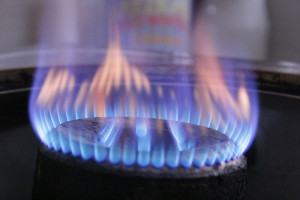 If you’re like most people, every time you turn on a burner, you give a thought to the effect on your utility bill and the environmental impact. Cooking doesn’t have to put such in dent in either one.
If you’re like most people, every time you turn on a burner, you give a thought to the effect on your utility bill and the environmental impact. Cooking doesn’t have to put such in dent in either one.
You may have seen the NuWave infomercials on TV. Perhaps you’ve seen the induction cooktops or portable induction burners in a store or in someone else’s home. While the benefits of an induction cooking system are many, it is not the same as your present electric, gas or propane system.
Before you plunge in head first, find out how an induction cooking system differs from what you are using now. Read the pros and cons. Learn what is induction cooking system and whether it is right for you.
Gas burners use an open flame to generate heat. Electric burners use an electrical coil to heat the pan or other vessel place on the burner. You’ll often see the term “hob,” which refers to the rings of the burners that create heat.
An induction burner works differently. Under its cooking surface is a coil of copper wire. An alternating electric current creates a magnetic flux, which magnetizes the pot (if it is made from induction ready cookware). The base of the cooking vessel acts as a transformer. The pan base gets heated up, remarkably fast if the burner works properly.
The surface of an induction burner does not heat up. Heat is transferred to the pot. Heat may be transferred from the pot to the cooking surface, but the single quality setting it most apart from other stove tops is the ability to cool down immediately after a pot is removed.
This short video by GE Appliances explains the system:
Good induction hobs use low wattage and energy efficient features. Induction burners can heat or boil food faster, while using a fraction of the energy it would take a gas or electric burner to accomplish the same thing. Some induction cooking system manufacturers claim energy efficiency of 70% to 90% compared to between 40% and 60% efficiency of conventional gas or electric cooking systems.
Depending on how much you cook, there can be a drastic drop in monthly electricity or gas bills. And of course, a corresponding environmental savings.
Environmental preservation and savings on your utility bill are not the only reasons to get a cooktop or portable induction burner. Consider these 8 benefits of induction cooking:
Of course, there are some disadvantages and cautions for induction cooking systems as well.
Overall, the efficiency and usefulness of modern induction cooking systems heralds a whole new era of safety, savings and efficiency. We predict that gas and electric burners will be phased out within a couple of decades. Before leaping straight in to a full induction stove top, we recommend experimenting with a portable induction burner first.
Our next article will explain why we chose the NuWave PIC Pro (and love it).
Premium WordPress Themes with Single Click Installation, Just a Click and your website is ready for use. Your Site is faster to built, easy to use & Search Engine Optimized.
| M | T | W | T | F | S | S |
|---|---|---|---|---|---|---|
| « May | ||||||
| 1 | 2 | 3 | 4 | 5 | 6 | |
| 7 | 8 | 9 | 10 | 11 | 12 | 13 |
| 14 | 15 | 16 | 17 | 18 | 19 | 20 |
| 21 | 22 | 23 | 24 | 25 | 26 | 27 |
| 28 | 29 | 30 | 31 | |||
Thank you for visiting Green Home Adviser